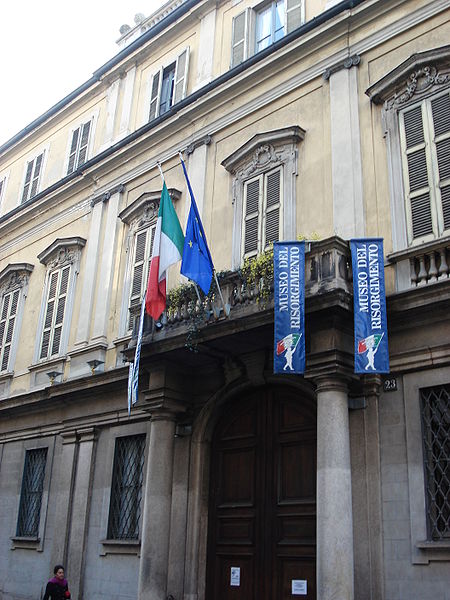Museum of the Risorgimento (Milan)
Giuseppe Piermarini buildingsMuseums in MilanMuseums of the Italian unificationTourist attractions in Milan

The Museum of the Risorgimento (Italian: Museo del Risorgimento), located in the 18th-century Milanese Palazzo Moriggia, houses a collection of objects and artworks which illustrate the history of Italian unification from Napoleon's first Italian campaign of 1796 to the annexation of Rome in 1870. The city of Milan played a key role in the process, most notably on the occasion of the 1848 uprising against the Austrians known as the Five Days of Milan.
Excerpt from the Wikipedia article Museum of the Risorgimento (Milan) (License: CC BY-SA 3.0, Authors, Images).Museum of the Risorgimento (Milan)
Via Borgonuovo, Milan Municipio 1
Geographical coordinates (GPS) Address Nearby Places Show on map
Geographical coordinates (GPS)
| Latitude | Longitude |
|---|---|
| N 45.472222222222 ° | E 9.1897222222222 ° |
Address
Palazzo Moriggia
Via Borgonuovo
20121 Milan, Municipio 1
Lombardy, Italy
Open on Google Maps








